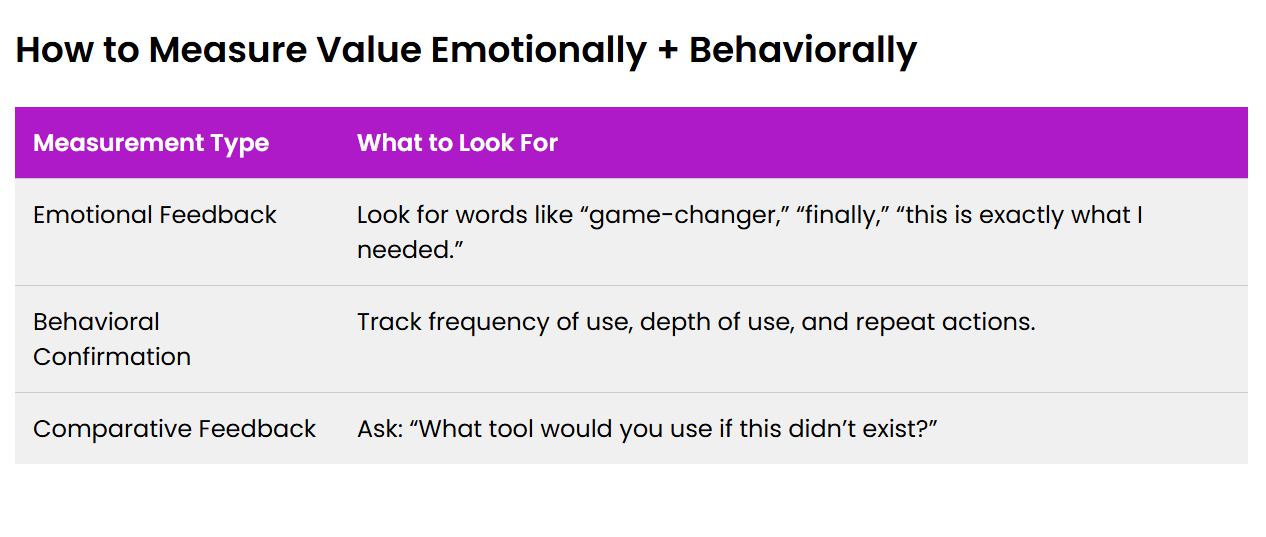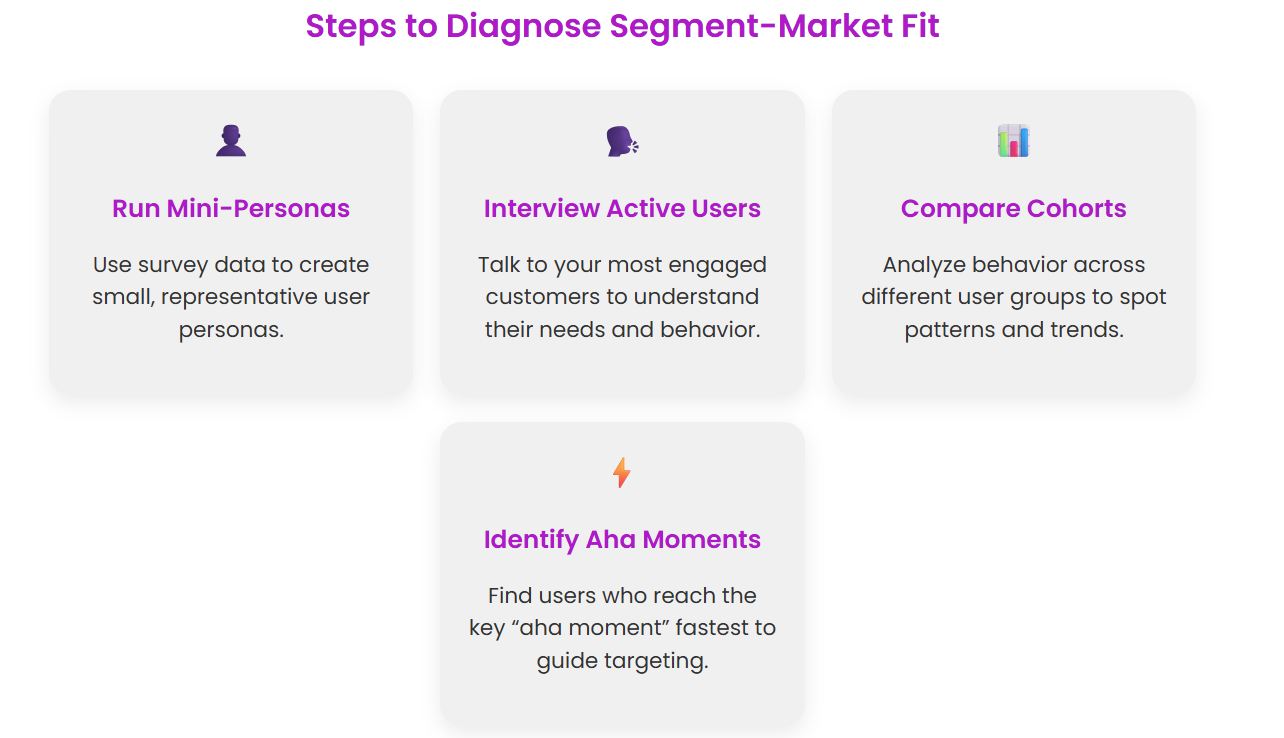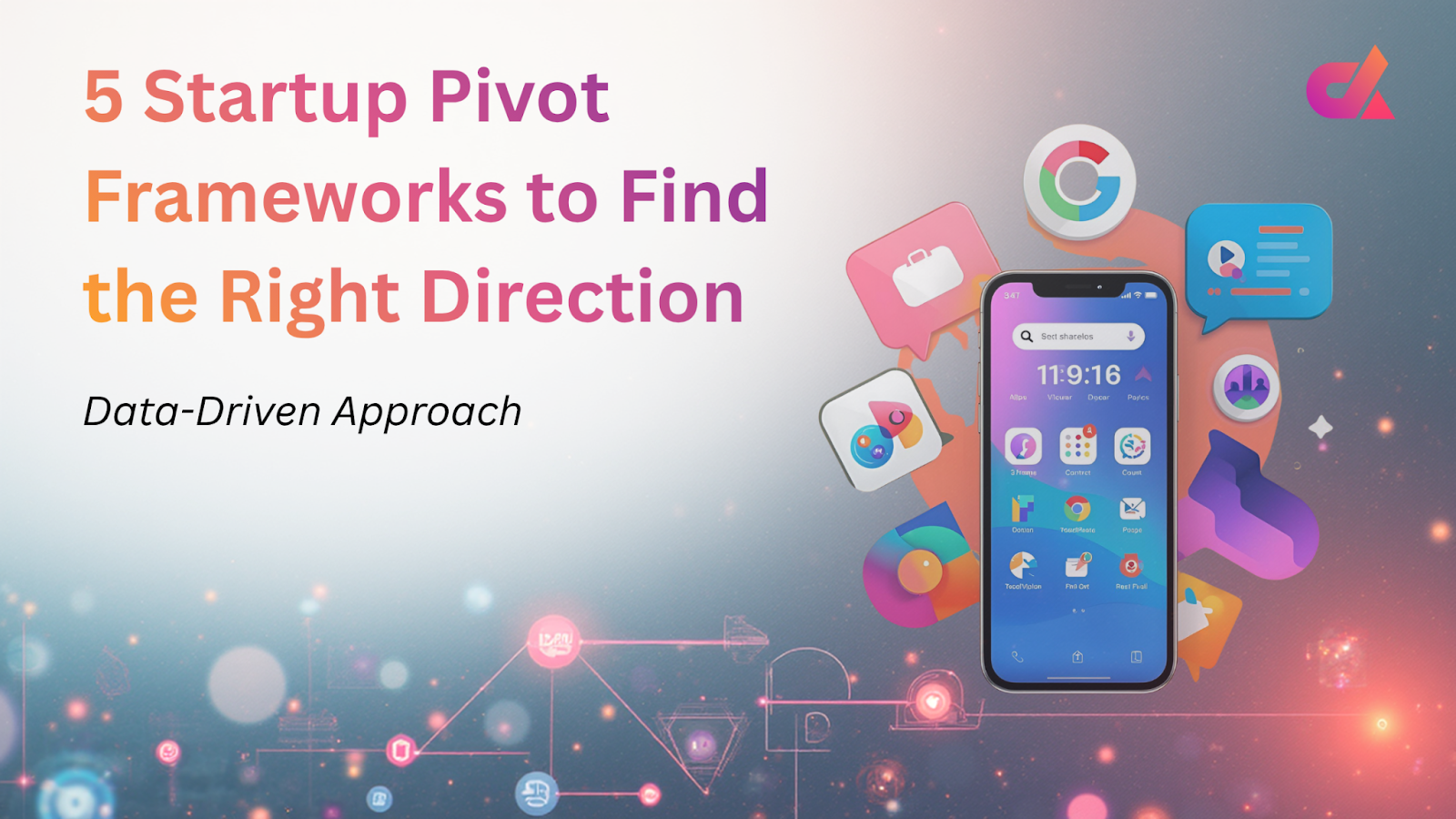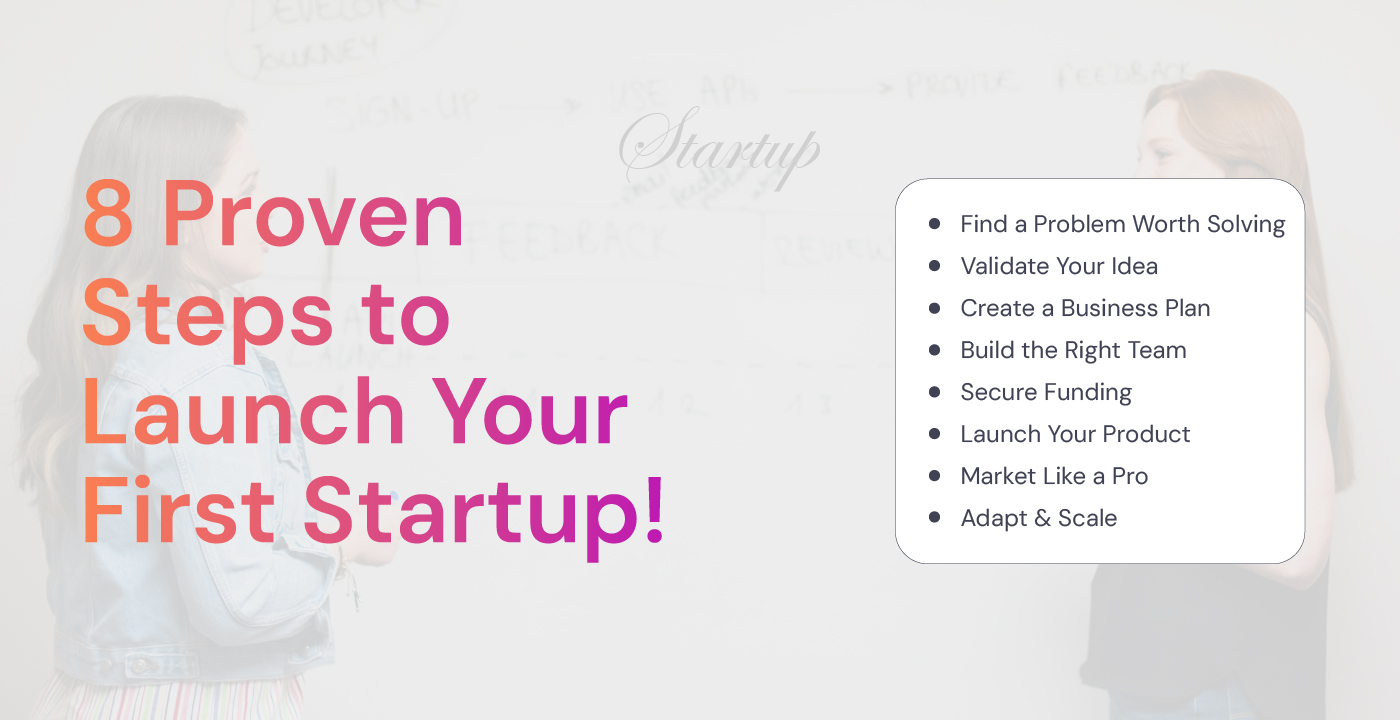There comes a moment in every startup’s life when the excitement of launching an MVP fades and the reality of user behavior takes its place. Your dashboards begin to tell a story you didn’t expect. Daily active users flatten. New sign-ups look promising, but don’t return. Customer interviews reveal half-answers, polite compliments, and emotional distance.
This is the moment founders whisper to themselves:
Do we keep going… or pivot?
Deciding whether to pivot is one of the hardest judgments in the startup journey. It’s not about ego. It’s not about giving up. It’s about understanding whether your product is moving toward product-market fit or away from it.
The truth is simple: pivoting isn’t a dramatic escape move; it’s a structured decision.
Startup pivot frameworks bring clarity when instinct is clouded by hope, something many founders experience in the early stages of starting a company.
The Startup Reality: Pivot Is a Strategy, Not a Panic Reaction
Many founders treat pivots like detonating an emergency exit. But pivots are often the reason the world’s biggest companies exist today.
Twitter began as a podcasting platform.
YouTube began as a dating site.
Slack started as a failed gaming tool.
What these companies share is the courage to recognize what the data was whispering before the market shouted it.
According to a recent analysis by Startups World, founders who delay a pivot beyond the ideal window, typically around 18 months, risk reducing their company’s valuation. Research shows that late‑pivoting startups see 61% smaller valuation increases between funding rounds compared to those who adjust course earlier.
A pivot is simply this:
A shift occurs when the original hypothesis stops matching user behavior.
Using structured startup pivot frameworks removes emotion, panic, and guesswork and replaces them with evidence.
Framework 1: The Problem‑Demand Test
If the problem is big and people really want it solved, there’s demand. This test checks if the problem is worth building a solution for.
Are You Solving a Burning Pain?
Before deciding when to pivot MVP, founders must revisit the basics:
Does the problem genuinely matter to users?
Startups often interpret interest as confirmation. But interest doesn’t build traction. Pain does.
How to Evaluate the Problem Using Data?
There are three signals founders should look for immediately:
High curiosity → low retention
If users explore your product but don’t return, you’re likely solving a “nice-to-have.”
Emotional distance during interviews
If users talk calmly about the problem, it’s probably not painful enough.
Weak workaround behavior
Users with real pain create messy solutions (spreadsheets, hacks, copy-paste workflows).
If they aren’t doing that, the pain may be weak.
According to a study of startup failure reasons, 14% of startups list “ignoring customers” as a major cause of failure, and “lack of market need” (i.e., product‑market fit) remains the top reason.
If you are seeing signs of low user feedback, weak workaround behaviors, or general emotional distance, you are not simply in iteration land. You may be facing the very fault line that leads many startups to fail.
The 3-Question Stress Test
Ask users:
- “What frustrates you the most about this?”
- “How often does this stop you or slow you down?”
- “What happens if you ignore this problem for a week?”
Strong pain results in emotional and specific answers.
If users express mild inconvenience instead of urgency, this indicates a weak foundation.
A pivot toward a validated pain point may be necessary.
Framework 2: The Value‑Feedback Loop
If users get value quickly, they keep coming back and giving feedback. This loop helps you improve the product fast and increase user engagement.
Do Users Truly Feel the Impact?
Many startups struggle because they fail to notice patterns in customer behavior, a challenge 100% apparent in failed startup lessons.
You can build the perfect onboarding, the smoothest UI, and the smartest features and still fail. Because none of that matters if users don’t feel meaningful value.
The Lean Startup approach teaches that a product is only viable when users perceive an unmistakable impact.

If users effortlessly mention alternatives, your product may not be providing differentiated value.
If the heatmap shows positive sentiment but low behavior, the MVP likely lacks a strong “core moment.”
This framework helps founders decide whether to pivot or preserve by exposing the emotional gap.
Framework 3: Behaviour Metrics & Retention Curve Audit
If users return naturally and their behavior shows consistent usage, the product has real pull. Auditing the retention curve reveals whether the product is genuinely valuable or just temporarily interesting.
Users Don’t Lie, Metrics Don’t Flatter
When founders ask when to pivot MVP, they usually look at opinions.
But opinions lie. Behavior never does.
Analyzing behavior curves gives the clearest, emotion-free signal about product health.
Behavior Indicators to Watch
- Activation Rate
How many users reach the “aha moment” within the first session? - Short-Term Retention (Day 1 & Day 7)
Low day-1 retention usually means value is unclear.
Low day-7 retention means value is unimportant. - Habit Formation Indicators
Products with real value show organic and repeated interactions without reminders.
Why is this Curve Important?
A healthy retention curve stabilizes after the initial drop. A dying product’s curve drops in a straight line toward zero.
This is one of the most reliable lean startup decisions to pivot.
If retention never stabilizes, not even after multiple iterations, you are facing a core-value failure, not a UX issue.
A pivot becomes a high-probability strategy.
Analyzing user behavior effectively requires having a solid startup tech stack, so that the right metrics are captured from the beginning.
Framework 4: The Strategic ICE Score
This framework is a simple way to prioritize ideas by scoring Impact, Confidence, and Ease. Higher scores show which ideas to tackle first.
Prioritize, Compare, Decide
Startups that collect feedback without structure fall into chaos.
Everyone has ideas. Stakeholders disagree. Engineers suggest features. Users request additions that don’t align with the vision.
This is where the ICE scoring framework becomes critical.
ICE stands for Impact, Confidence, Ease, an essential startup pivot framework for choosing what to act on first.
When your highest ICE-scoring ideas require rethinking your user segment, shifting your problem definition, or changing your value promise, it’s not an iteration. It is the signal for a pivot.

Framework 5: Audience‑Segment Fit Review
Check if your product truly solves the problem for a specific audience. This review ensures you’re targeting the right users who will actually use and benefit from your solution.
Maybe the problem is real… but you are reaching the wrong users.
Sometimes the product solves a real problem, but for the wrong customer.
This is one of the most overlooked frameworks to decide pivot or preserve.
You are targeting the wrong Segment when:
- A small group has high usage, but the general market doesn’t
- Paid users behave differently (and more enthusiastically) than free users
- Your feature requests cluster around a specific subgroup
- Organic referrals come from a niche you weren’t targeting
These signals, which segment the MVP, naturally align with it.

If the strongest behavioral signals come from a segment you didn’t intend to serve, the pivot is not about the product; it’s about the audience.
This pivot is often the easiest and most powerful.
How Do All 5 Startup Pivot Frameworks Work Together (The Pivot Matrix)?
Founders rarely pivot based on one signal. It’s the pattern that matters.
Use these frameworks together:
- Run the Problem‑Demand Test → Is the pain real?
- Run the Value‑Feedback Loop → Are users getting the value?
- Audit behaviour metrics and retention curves → Are metrics trending toward stabilisation or collapse?
- Use ICE scoring → What paths forward look like the highest ROI?
- Review segment fit → Who is actually engaging most deeply?
When 3 or more frameworks point to the same conclusion, you have a reliable and data-backed decision.
At Doerz Tech, we work with you to understand your users, uncover the real problems that matter, and make decisions based on what actually works.
We will help you see the patterns in your data, focus on the right audience, and take the next step.
Let’s tackle your pivot together.









